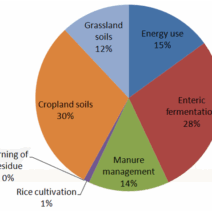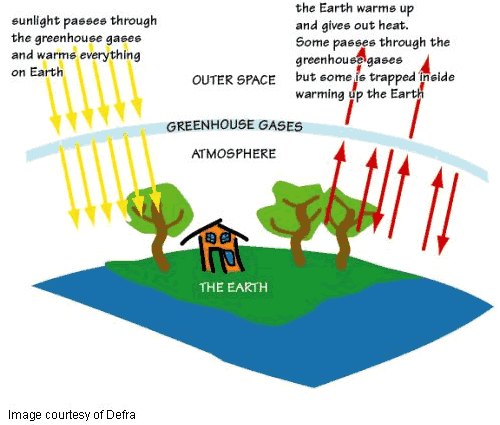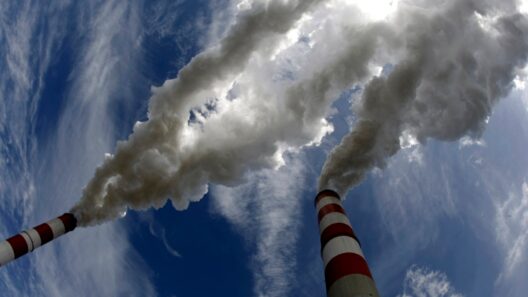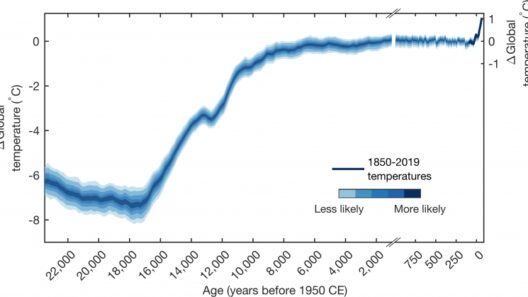The Greenhouse Effect is often likened to Earth’s warming blanket, a metaphor that encapsulates its essential role in regulating the planet’s temperature. Just as a blanket retains warmth, the greenhouse gases in the atmosphere trap heat from the sun, ensuring that our planet remains habitable. However, the increasing thickness of this blanket due to human activities has sparked critical environmental concerns. This discussion explores the mechanics of the greenhouse effect, the types of greenhouse gases involved, its implications, and potential solutions.
At its core, the greenhouse effect operates on a straightforward principle: solar radiation enters the Earth’s atmosphere, where a portion of it is absorbed by the surface, warming the planet. This heat is then re-radiated back into space in the form of infrared radiation. Here lies the crux of the greenhouse effect: certain gases in the atmosphere, known as greenhouse gases, capture this infrared radiation, preventing it from escaping into space—a crucial process that maintains Earth’s temperature within a range conducive to life.
Prominent greenhouse gases include carbon dioxide (CO2), methane (CH4), nitrous oxide (N2O), and water vapor. Each gas contributes differently to the overall warming effect, with CO2 being the most significant due to its high concentration and long atmospheric lifespan. Methane, while present in smaller amounts, is approximately 25 times more effective at trapping heat over a century than CO2. This disparity accentuates the urgency of addressing methane emissions from agricultural practices, waste management, and fossil fuel extraction.
The Earth’s atmosphere can be visualized as a layered quilt, each layer offering a unique texture that influences heat retention. The troposphere, the lowest atmospheric layer, contains the majority of greenhouse gases. As one ascends through the stratosphere, mesosphere, and thermosphere, the concentration of these gases diminishes. The troposphere acts as the primary layer of insulation, enveloping the planet in a shield of warmth, while the outer layers allow for the expulsion of some heat into space. However, with increased emissions from industrial activities, deforestation, and fossil fuel combustion, this delicate balance has been disrupted, leading to a gradual thickening of the insulating layer.
Earth’s temperature is not uniformly affected by the greenhouse effect. The phenomenon contributes to a myriad of climatic changes, including altered precipitation patterns, heightened frequency of extreme weather events, and an overall rise in average global temperatures. Imagine breathing under an increasingly suffocating blanket; soon, that comfort may morph into discomfort. The consequences of climate change manifest through rising sea levels, diminished biodiversity, and threats to food security, posing significant risks to human health and safety.
A crucial aspect of the greenhouse effect is its feedback mechanisms. One notable example is the albedo effect, where changes in the Earth’s surface—such as the melting of polar ice caps—reduce the planet’s reflectivity. As ice transforms into water, less sunlight is reflected back into space, exacerbating warming. This feedback loop contributes to further ice melt, creating an accelerating cycle that heightens the greenhouse effect.
Understanding the origins of this warming blanket sheds light on the anthropogenic factors influencing its thickness. The Industrial Revolution marked a pivotal moment in history, as the transition to coal and later to oil and natural gas increased carbon emissions exponentially. Deforestation for agricultural expansion not only reduces the planet’s capacity to absorb CO2 but also releases stored carbon into the atmosphere. Urbanization further complicates matters, instigating heat islands in cities that exacerbate local climate warming, illustrating how human actions intricately tie into this global phenomenon.
Combating the greenhouse effect requires multifaceted strategies. One promising avenue involves transitioning to renewable energy sources that decouple growth from carbon emissions. Solar, wind, and hydroelectric power present viable alternatives to fossil fuels, simultaneously addressing energy demands and reducing greenhouse gas emissions. Moreover, reforestation and afforestation initiatives can bolster carbon sinks while enhancing biodiversity and ecosystem resilience.
Another critical area of focus is innovating agricultural practices. Techniques such as regenerative agriculture promote soil health through organic farming, reduced tillage, and crop rotation. These methods not only sequester carbon but also improve food security and ecosystem services. Furthermore, enhancing energy efficiency across industries, households, and transportation systems can significantly curtail emissions while fostering economic benefits.
International cooperation is paramount in addressing the greenhouse effect and its consequential climate change. Frameworks such as the Paris Agreement serve as collective commitments to limit global warming to well below 2 degrees Celsius, encouraging nations to pursue sustainable practices and invest in clean energy technologies. Individual actions also play a vital role. Citizens can advocate for policy changes, support sustainable businesses, and adopt more environmentally conscious lifestyles to help mitigate their carbon footprints.
In conclusion, while the greenhouse effect is an essential natural process that sustains life on Earth, human activities have intensified this phenomenon to a perilous extent. Embracing the metaphor of a warming blanket encourages reflection on our collective responsibilities to ensure that this blanket remains delicate, rather than suffocating. The pursuit of a sustainable future relies on understanding the intricate dynamics of the greenhouse effect and implementing innovative solutions that balance human needs with the planet’s health. As the fabric of our environment faces unprecedented challenges, we are called to weave a new narrative—one where harmony with nature allows the warmth of our planet to nourish rather than diminish life.








